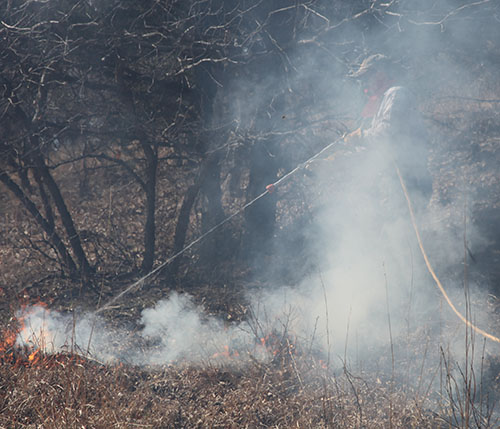April 9, 2024
Consider Your Smoke Impact When Conducting Prescribed Burns

With the end of winter, prescribed burning is beginning, renovating and rejuvenating native rangelands in Kansas and nearby states. Prescribed burning provides a host of benefits for rangelands, including controlling woody plant invasions, improving grassland wildlife habitat, and improving livestock grazing. A description of these and other reasons for burning can be found in the publication Benefits of Rangeland Burning.
Prescribed burning often occurs in the spring and follows the common late winter sniffling caused by clouds of invisible but potent juniper pollen releases. Smoke from prescribed burning can contribute to poor air quality while destroying pollen-bearing trees. To minimize smoke impacts, ranchers are encouraged to conduct prescribed burns on days when there will be less impact on downwind populations, assuming other prescription parameters are met. Ranchers can see where their smoke is predicted to go by using the smoke forecast and modeling tool. Choosing to burn on a day when smoke is less likely to cause an air quality problem eases relationships with downwind populations.
Last year there were no exceedances of the NAAQS daily averages for ozone and PM2.5. This year there have already been preliminary exceedances for the PM2.5 24-hour average in March (twice on monitors in Chanute, KS and Copan, OK, and once near Tulsa, OK).
The Kansas Department of Health and Environment has issued a health advisory alert for the spring burn season for those with health conditions that make them more susceptible to smoke. Current air quality conditions at monitor sites can be found on the Fire and Smoke Map.
Overall, fuel loads in the Flint Hills region are average to below average this spring due to dry conditions last year and this winter.